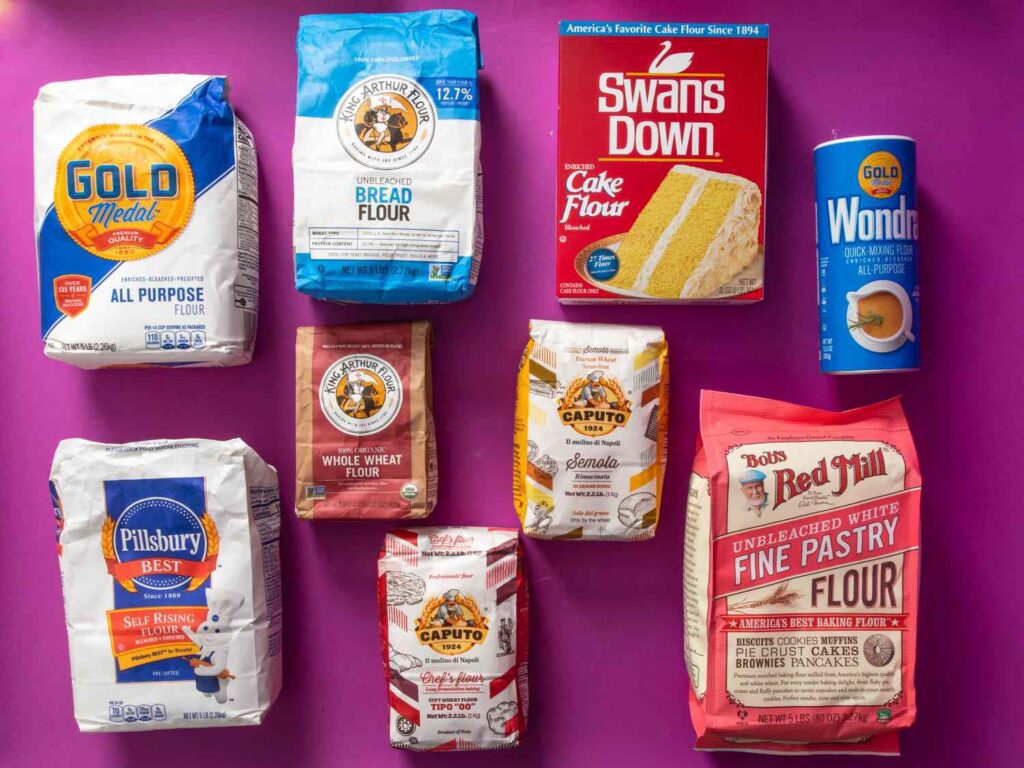Understanding the nutritional values of various flours is crucial in making healthier baking choices. All-purpose flour is versatile, but not suitable for those with gluten allergies. Whole wheat flour is high in protein and fiber, bread flour for yeast-based products, cake flour for pastries, and biscuits. Almond flour is gluten-free and adds a nutty flavor, while coconut flour is also gluten-free but absorbs more liquid. Rye flour adds a unique flavor and dense texture. Oat flour adds a nutty flavor and dense texture, and all the above options are excellent sources of various nutrients.
Baking with Different Types of Flours and Their Nutritional Values
All-purpose Flour
All-purpose flour is the most versatile flour used in baking. It is a combination of hard and soft wheat and has a medium protein content. A cup of all-purpose flour contains 455 calories, 12g protein, 1g fat, and 96g carbohydrates. It is a good source of iron, calcium, and vitamin B6. However, it is not suitable for people with gluten allergies or celiac disease as it contains gluten.
Whole Wheat Flour
Whole wheat flour is made from the whole grain, including the bran and germ, and has a higher protein content than all-purpose flour. A cup of whole wheat flour contains 407 calories, 16g protein, 2g fat, and 87g carbohydrates. It is a good source of fiber, magnesium, and zinc. Whole wheat flour adds a nutty flavor and a coarser texture to baked goods.
Bread Flour
Bread flour is made from hard wheat and has a high protein content suitable for making yeast bread, rolls, and pizza crusts. A cup of bread flour contains 455 calories, 14g protein, 1g fat, and 95g carbohydrates. It is a good source of fiber, iron, and vitamin B6. The higher gluten content in bread flour produces a chewier texture in baked goods.
Cake Flour
Cake flour is made from soft wheat and has a lower protein content suitable for cakes, biscuits, and pastries. A cup of cake flour contains 407 calories, 8g protein, 1g fat, and 85g carbohydrates. It is a good source of iron and calcium. Cake flour produces a tender, delicate crumb in baked goods.
Almond Flour
Almond flour is made from blanched almonds and is a gluten-free alternative to wheat flour. A cup of almond flour contains 640 calories, 24g protein, 56g fat, and 24g carbohydrates. It is a good source of vitamin E, magnesium, and fiber. Almond flour adds a nutty flavor and a moist texture to baked goods.
Coconut Flour
Coconut flour is made from ground coconut meat and is also a gluten-free alternative to wheat flour. A cup of coconut flour contains 480 calories, 16g protein, 14g fat, and 64g carbohydrates. It is a good source of fiber and iron. Coconut flour absorbs more liquid than wheat flour, so it needs more eggs and liquids in recipes.
Oat Flour
Oat flour is made from ground oats and is also a gluten-free alternative to wheat flour. A cup of oat flour contains 360 calories, 14g protein, 6g fat, and 64g carbohydrates. It is a good source of fiber and iron. Oat flour adds a nutty flavor and a dense texture to baked goods.
Rye Flour
Rye flour is made from rye grain and has a lower gluten content than wheat flour. A cup of rye flour contains 335 calories, 12g protein, 2g fat, and 79g carbohydrates. It is a good source of fiber, magnesium, and zinc. Rye flour adds a unique flavor and a dense texture to bread and other baked goods.
Conclusion
Baking with different types of flours can add flavor, texture, and nutrients to your baked goods. All-purpose flour is the most versatile flour, while whole wheat flour, bread flour, and cake flour have specific uses in baking. Almond flour, coconut flour, oat flour, and rye flour are gluten-free alternatives to wheat flour that add unique flavors and nutrients to baked goods. Understanding the nutritional values of different flours can help you make healthier choices in your baking.
